This post may contain affiliate links. Read more at our disclosure policy.
Smoked Prime Rib is the ultimate holiday meal, and this is truly the best way to prepare this amazing holiday rib roast. We put together a comprehensive guide and video on smoking the perfect Smoked Prime Rib recipe every time.
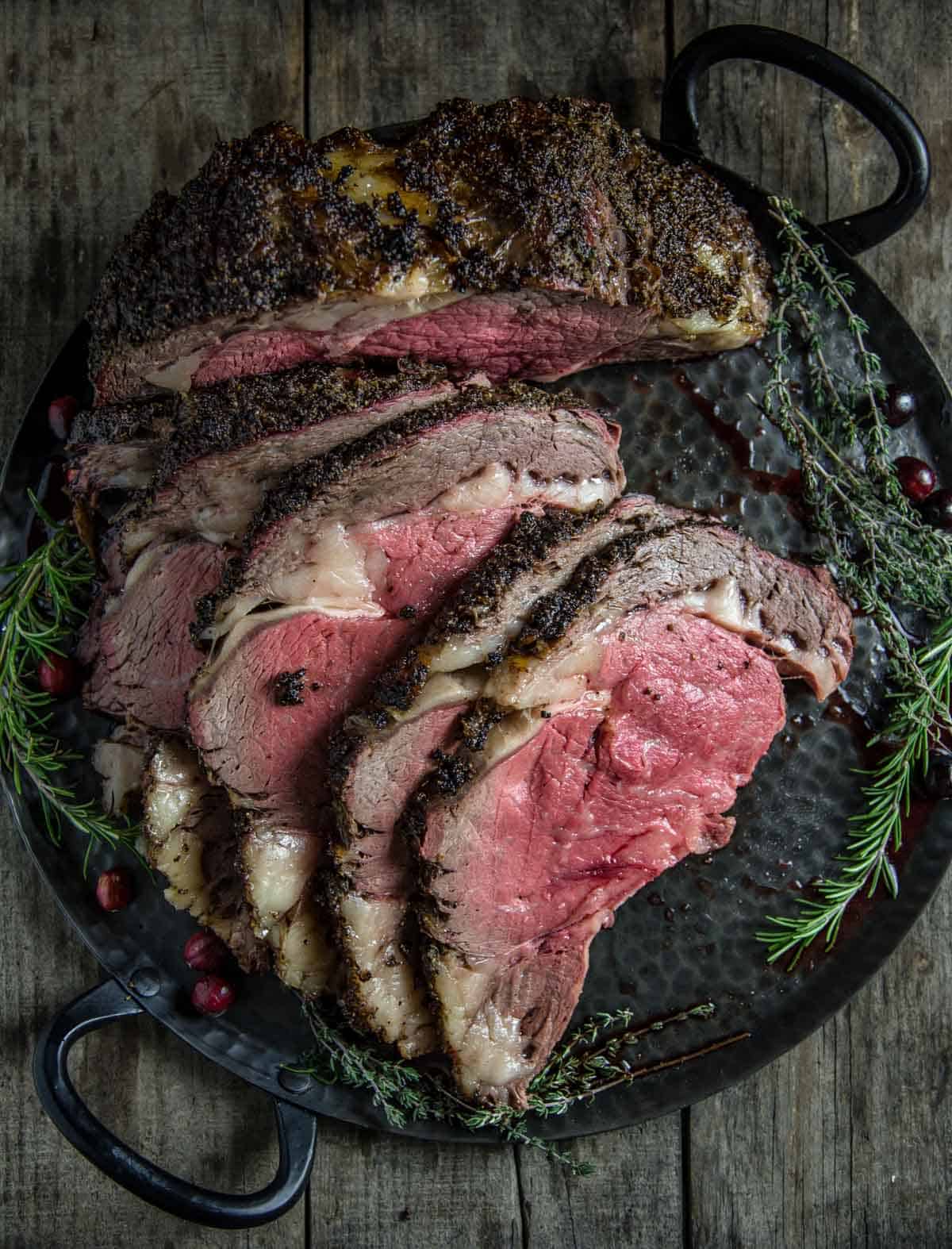
Prime Rib is one of the iconic celebratory holiday meals, especially on Christmas. It’s dramatic, big in flavor, and delicious. There are many ways to make it, that can include Grilled Prime Rib or even Reverse-Seared Prime Rib. If you are cooking this special occasion recipe for family or friends this holiday season this is your go-to guide for smoking the perfect roast.
Table of Contents
Smoked Prime Rib Ingredients
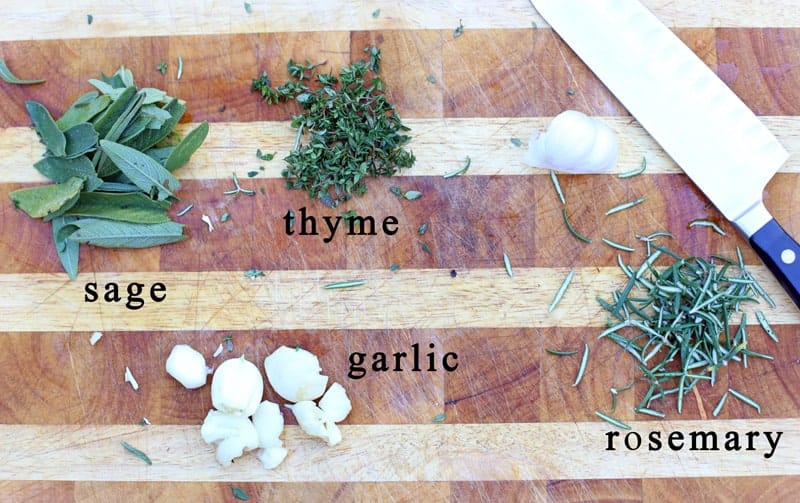
- Prime Rib: You can use a boneless or a bone-in prime rib or rib roast. We prefer bone-in as the bone protects the bottom of the roast.
- Olive Oil: We add a little olive oil on the outside of the rib roast as a binder for the seasoning and the herb paste.
- Seasoning: We like to keep it simple, with even parts of kosher salt and coarse black pepper. Alternatively, you can use our SPG Rub, which adds granulated garlic. Or for a real savory flavor use our Beef Seasoning.
- Herb Paste: The paste is a mix of extra virgin olive oil, fresh garlic, rosemary, thyme, and sage. The aromatics are great in the smoker. If you don’t like any one of those flavors you can leave it out. Just be sure you keep the same total portions for fresh herbs.
Selecting A Roast
- Select the Size of Roast: When shopping for a roast for an event or party, we plan 1 pound of prime rib per person (pre-cook weight).
- What is your Budget: Having a budget can help guide where you want to find the most quality for the money. Look online if you aren’t finding what you want locally.
- Consider the Marbling: Look at the intramuscular fat. Be sure there is healthy marbling, but still a good amount of meat.
- Bone-In or Boneless: If buying bone-in, typically order the roast by number of rib bones, like a 3-bone rib roast. Bone-in has the benefit of a layer between the heat source and the meat to protect the meat while cooking.
There is no flavor difference between bone-in or boneless (so don’t let anyone tell you there is). The difference comes in presentation and having a small layer between the grill, the bones, and the rib roast.
The flavor differences are going to be defined by the quality of meat and marbling vs. whether or not your roast is boneless or bone-in.
Wait – Isn’t Prime Rib Prime Quality?
Prime Rib does not technically mean “Prime graded”. Prime refers to the primal cut, or the first cut that butchers make from cattle. Quality, as defined by the USDA, is the marbling quality of beef like choice versus prime, which in turn also impacts tenderness and flavor.
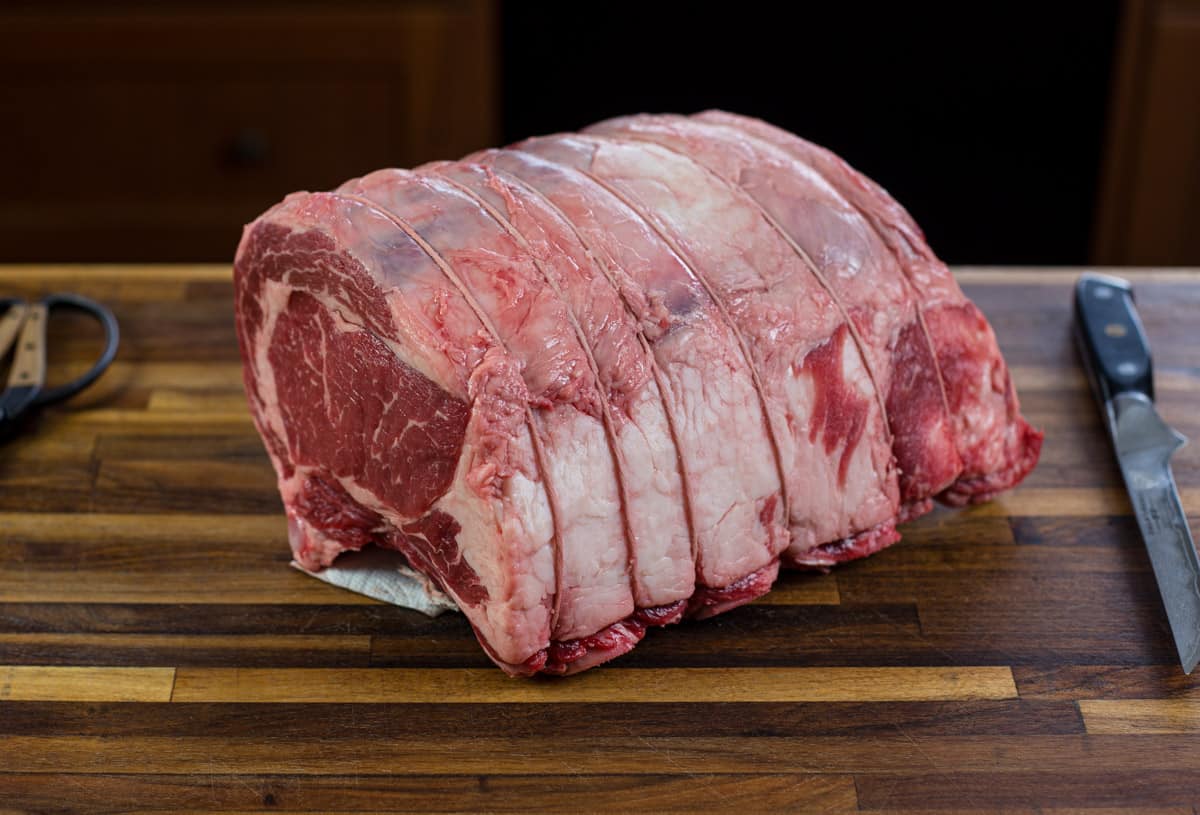
In order of grade of beef quality per USDA you have Prime, Choice, and then Select.
While Prime is considered the highest quality, Choice also has tremendous flavor and is certainly not “inferior” meat. It just didn’t rise to the occasion of marbling and quality as the Prime. When you get to Select, you begin to see a difference in the meat, the fat content, and other factors. It is still worthy of smoking, but I would be sure if going down this route, consider at least a Choice cut for a smoked prime rib.
You can also buy American Wagyu, like from Snake River Farms. The marbling for American Wagyu is equal to or above Prime. American Wagyu contains even more marbling and has an amazing buttery texture that is incredible.
At some stores, you may see labels outlining the rancher, or the type of feed (grass, grain, etc.). Don’t hesitate to ask if the beef is rated, and if it isn’t, at least discuss with the butcher that you are looking for a Choice or Prime quality cut or its equivalent. Grain finishing adds marbling. Strictly grass-fed beef will tend to be leaner and with less marbling.
Finally, look closely at the labeling. In the end, it may say “Prime Rib of Beef” or “Standing Beef Rib Roast for Prime Rib” according to the USDA but not have to be derived from Prime-grade beef. So when in doubt ask the butcher.
Preparation
Your prime rib may come with the bones removed by the butcher, or with the bones attached. It is really a personal preference. In our experience, it’s easier to separate the bones before the roast is cooked, and then tie them back together using butcher twine.
- Trim Excess Fat: Start by trimming the excess fat cap off the outer roast if it is hanging or loose. There is plenty of marbling inside to give flavor. Removing excess fat helps get the seasoning closer to the meat.
- Pat Dry: After trimming the fat, pat the roast dry.
- Tie: If the bones have not been removed do it now, before seasoning and before smoking. Then tie them back together with butcher twine.
Prime Rib Seasoning
Start with a coat of olive oil and then add kosher salt and black pepper. Sound simple? It is, and this is due to the amazing flavor you get from the fat rendering as you slowly cook the meat.
Want to add another layer of flavor? Consider a flavorful herb paste of olive oil, crushed garlic, thyme, sage, and rosemary for your Smoked Prime Rib, such as the one below.
A paste is simply a wet rub. Just blend all of the ingredients together in a food processor. It sticks easier to the meat, and when using smoke, the moisture from the paste helps the flavor adhere to the meat.
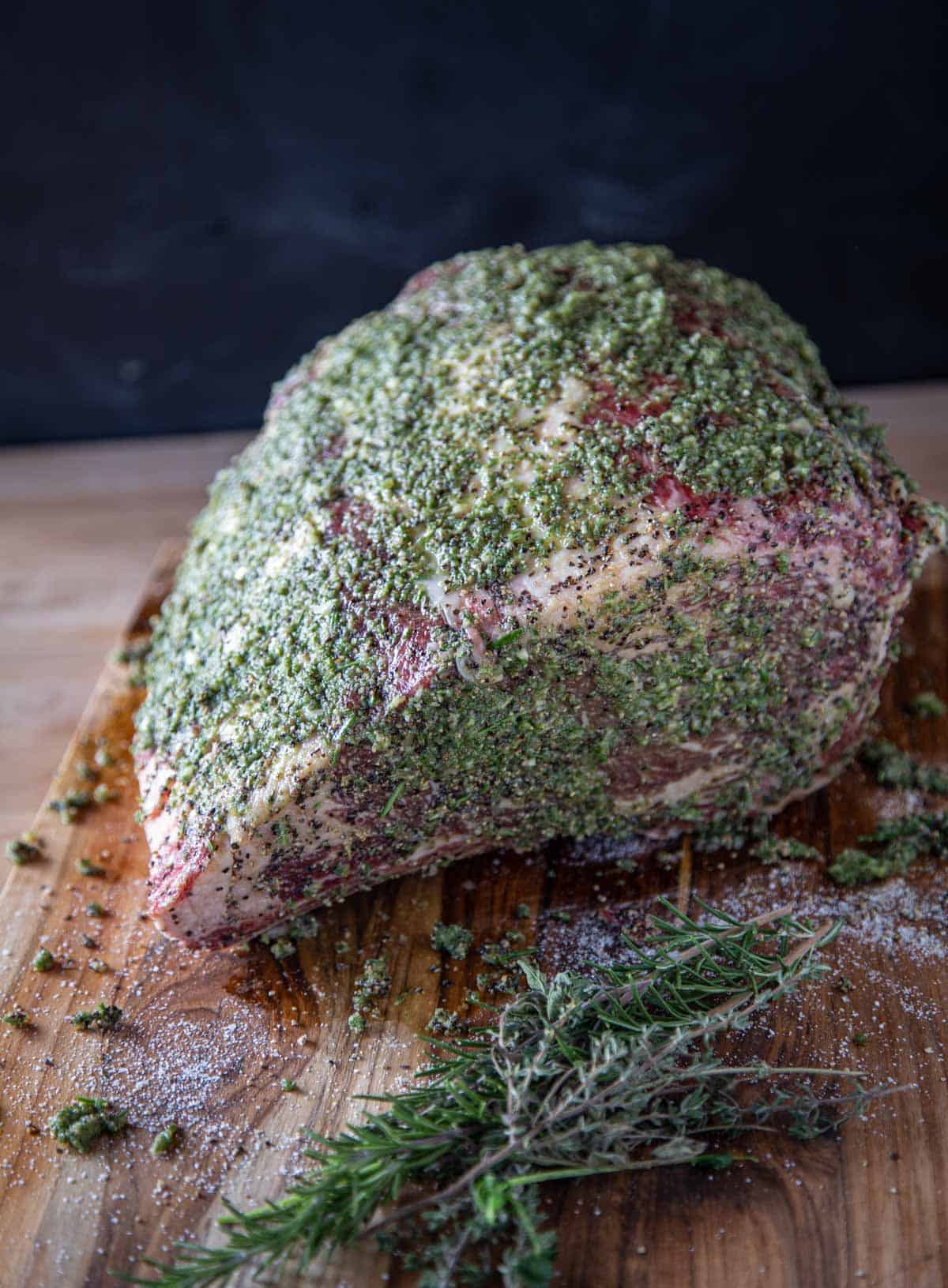
Remember to also season within that area of the bone that was removed by the butcher, and coat everywhere. Seriously, be LIBERAL with your paste and seasonings!
Double this herb paste recipe if the roast is over 5 pounds.
How to Smoke a Prime Rib
The process for smoking prime rib is the same whether you use a pellet smoker or Big Green Egg.
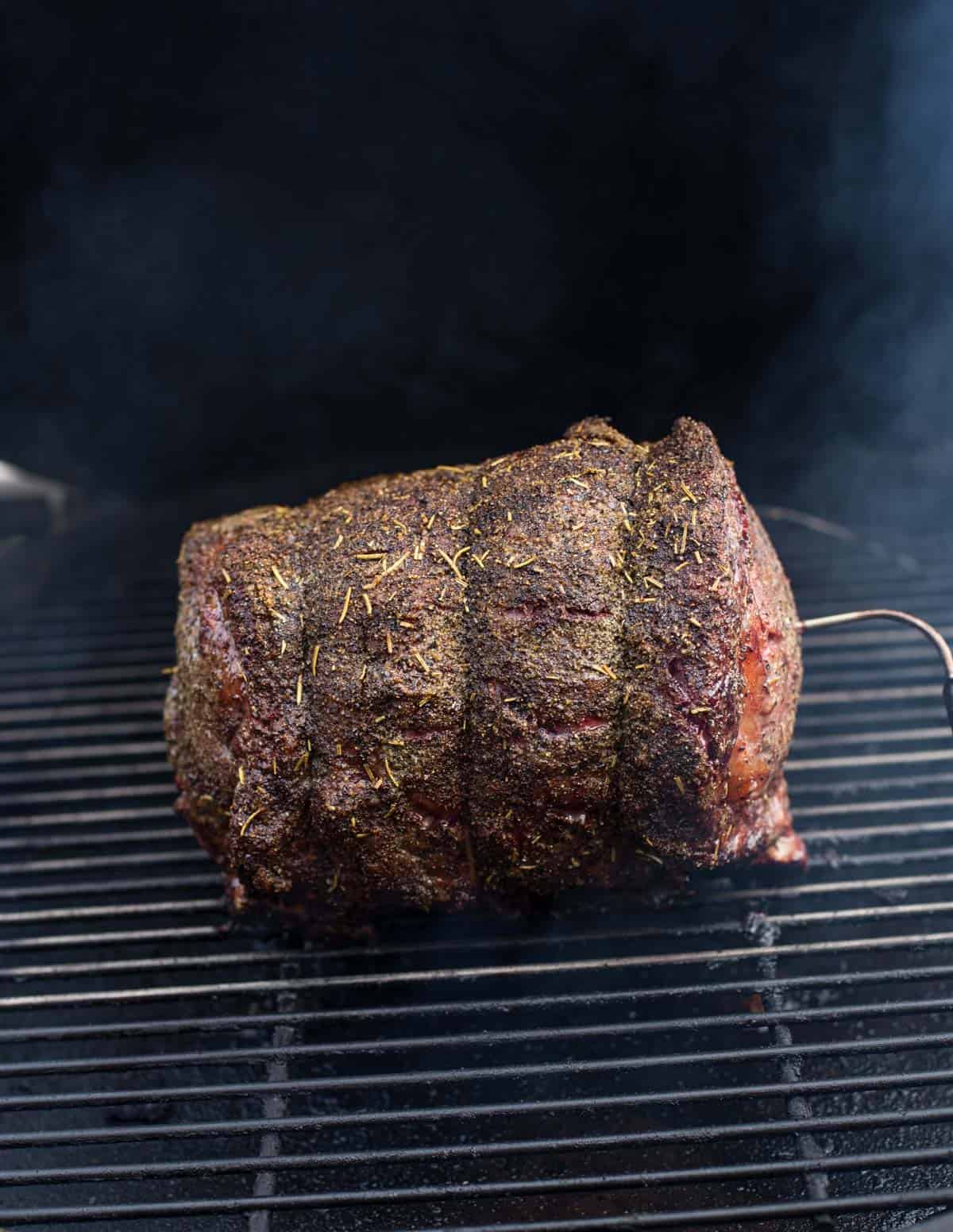
- Preheat Smoker: Set the smoker to 225 degrees, and keep this temperature consistent throughout the cooking process. We recommend using fruit wood or oak for a balanced smoky flavor.
- Smoke Prime Rib: Place the seasoned prime rib roast onto the smoker when the smoker comes to temperature. Insert any meat probe from your leave-in thermometer like the Thermoworks Smoke Unit. Smoke the roast until the internal temperature of the meat, when measured at the center, is at your desired level; I like 125 degrees for rare and 135 for medium rare when using a good instant read thermometer.
- Rest: Once you pull the roast from the smoker, tent the roast loosely in aluminum foil and allow the meat to rest for 30 minutes. The temperature will continue to rise another 5 degrees because of carry-over cooking and while the meat rests, the cells will reabsorb the juices as it cools keeping the sliced meat moist.
- Slice and Serve: Carve and serve with your favorite sides.
See the recipe card for more details on the temperature recommendations for the level of doneness. Or you can refer to our article on the perfect steak temperature.
Slicing + Serving
Remove the foil and then remove the strings (if you wrapped your roast). Next, remove the bones from the prime rib roast (see video for how we do this). As much as I love the bone, I find a much more elegant (and easier) presentation without the bone. Place the roast on a cutting board and slice to the desired thickness. Serve with your favorite sides.
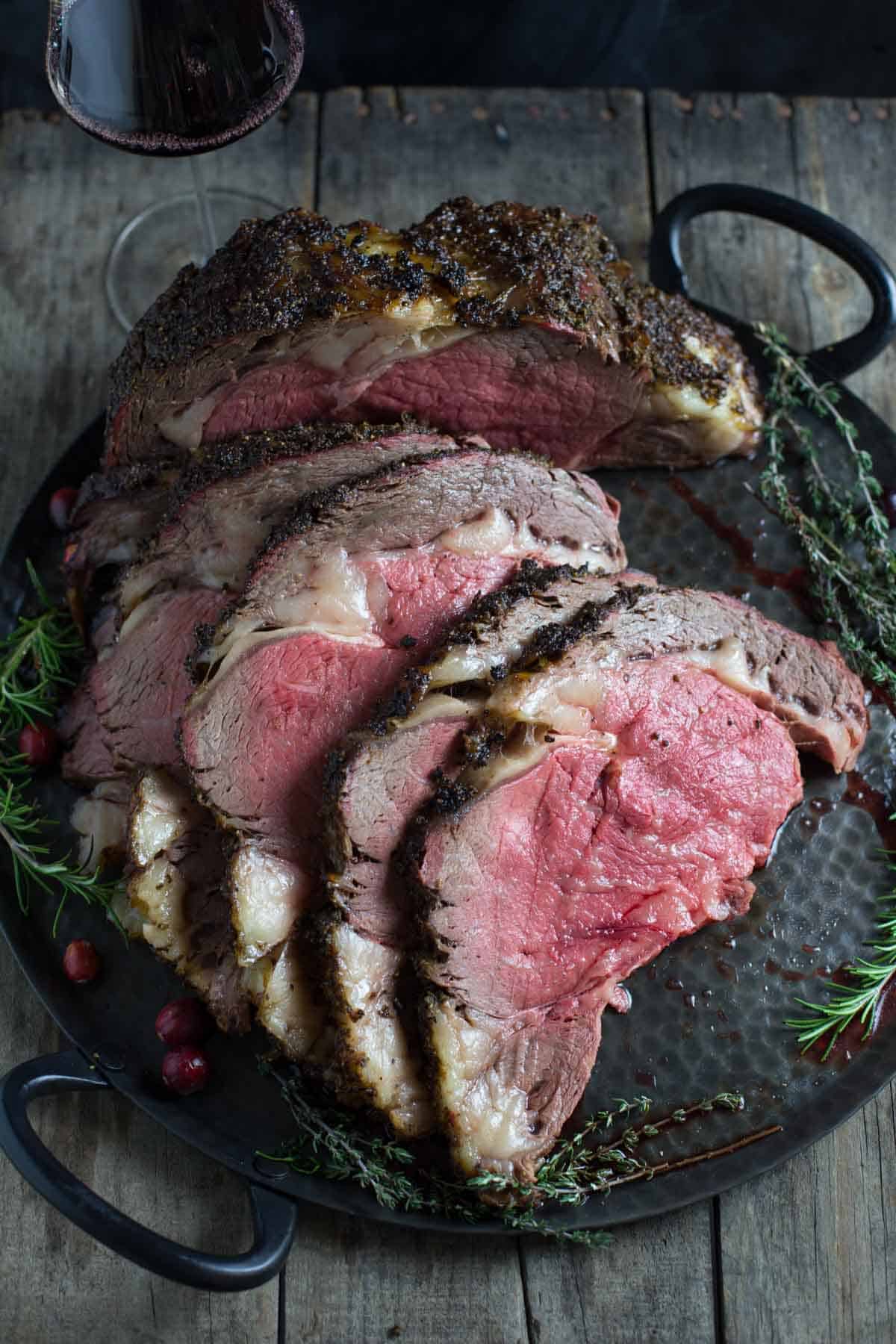
The great part of smoking a Prime Rib Roast is the ability to cook the outer edges to medium while the center can be rare. So you can please a wide audience without overcooking the entire roast if some of your guests prefer a more medium-well done slice.
If you want to add even more flavor consider finishing with a nice finishing salt or a compound butter.
Would you like to save this?
How Long to Smoke Prime Rib
Cooking times are based on a finished internal temperature of 130°F. Remember, the internal temperature of the prime rib – not the time – determines doneness when cooking at low temperatures.
- 225°F: ~40 minutes per pound
- 250°F: ~30 minutes per pound
- 275°F: ~20 minutes per pound
Approximate smoking times for prime rib at 225°F:
- 4 lbs: 2.6 hours
- 6 lbs: 4 hours
- 8 lbs: 5.3 hours
- 10 lbs: 6.6 hours
Chef’s Tip
Be sure to add 30 minutes of resting time to the cooking time for carry over cooking. If your rib roast is done early, then wrap the roast in butcher paper or a towel and place into a cooler with no ice. The roast will stay warm for up to four hours.
Frequently Asked Questions
We do not recommend wrapping a rib roast while smoking. Wrapping stops the infusion of smoke flavor and prevents a nice crust, or bark, from developing. We recommend smoking throughout the process unwrapped and loosely tenting in foil when resting.
The top of the prime rib will have the fat cap. We like to smoke so the fat cap is facing up throughout the smoking process. This allows some of the fat cap to render down and through the roast.
We recommend 225 degrees Fahrenheit for the most smoke flavor. It adds 10 more minutes of cooking time per pound versus 250 degrees. The most important is to use a good leave-in instant read thermometer and remove it when it reads an internal temperature of 125 degrees F and then let rest for carry-over cooking to occur.
Prime Rib Wine Pairing
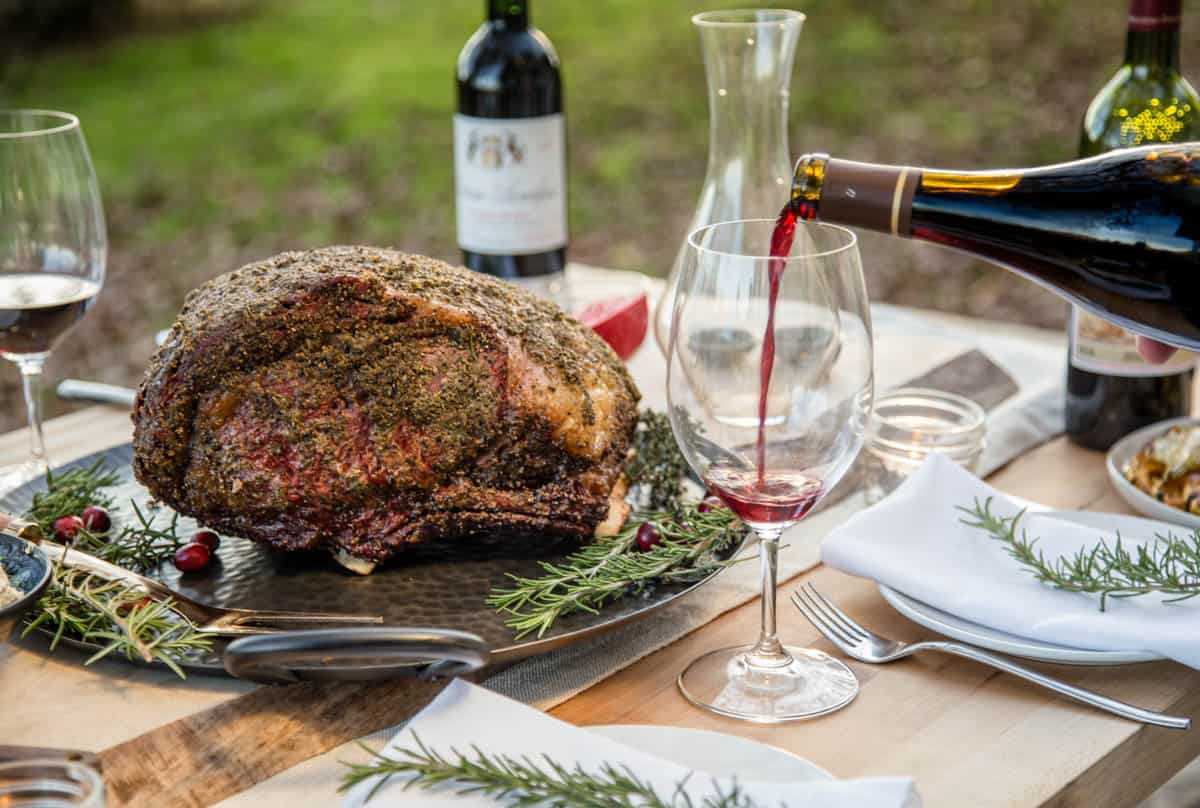
The best wine with Prime Rib is a big red such as a California Cabernet Sauvignon, Bordeaux, Merlot, or Malbec. You can read more about pairing wine with Beef Rib Roast, where we discuss all things wine and smoked prime rib.
Storage and Reheating Instructions
Prime rib will last up to five days in the refrigerator. Store in an airtight container. To reheat Prime Rib, use the following instructions.
On the Stovetop: Heat a large cast iron or stainless steel pan on the stovetop set to medium heat, and add olive oil or butter. Let warm until just about to smoke point. Add the slices and pan sear like a steak. Flip after a few minutes and sear the other side.
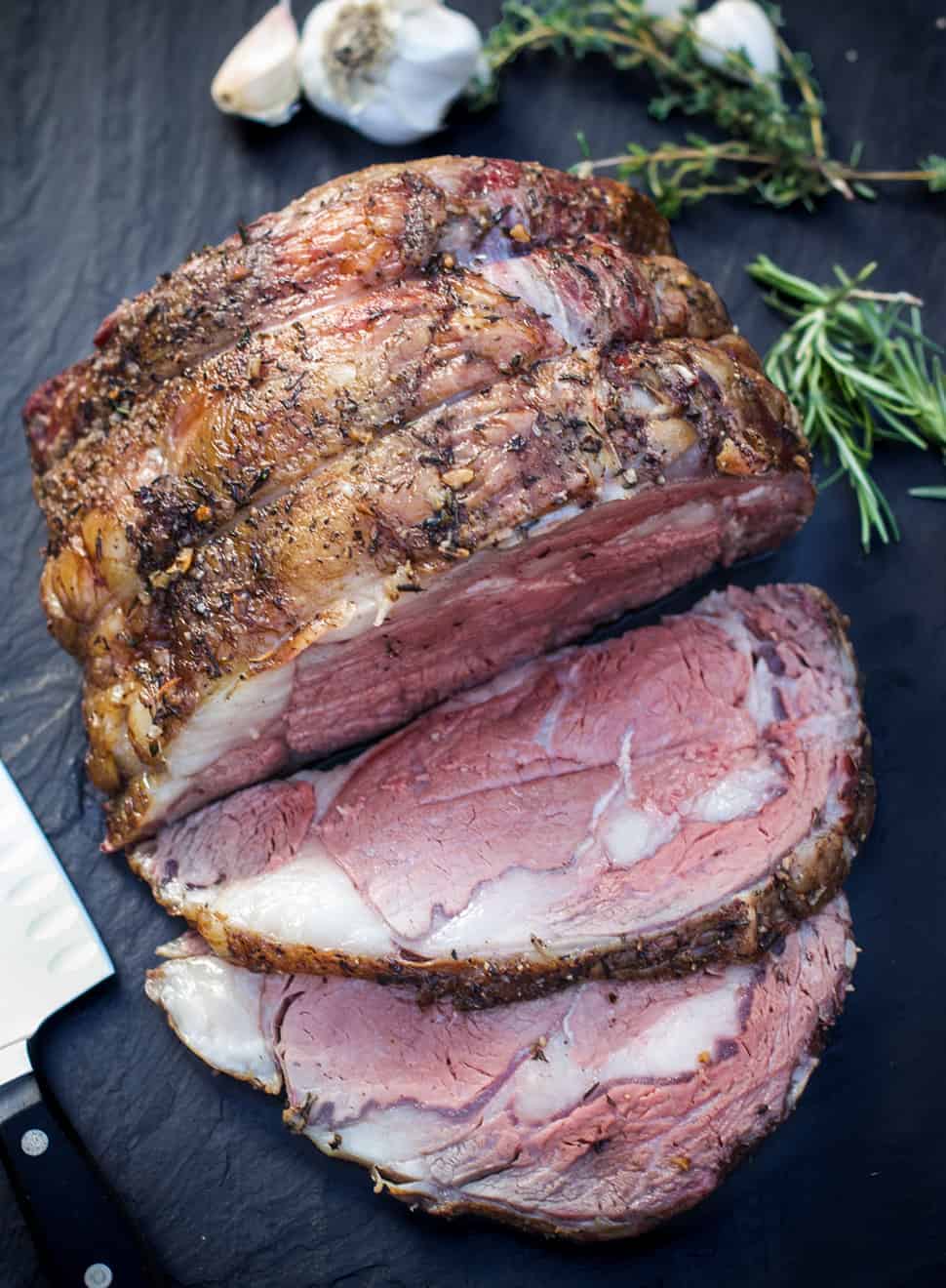
In the Oven: Preheat the oven to 400 degrees F. Wrap the rib roast or slices in aluminum foil. Place in the oven for 15 minutes and then serve warm.
Holiday Meal Planning Ideas
Explore our entire article on holiday recipes for the grill and smoker for more holiday roast inspiration, appetizers, and cocktails. Here are some of our favorites.
Leftover Prime Rib Ideas
If you end up with leftover prime rib then here are a few recipes for inspiration.
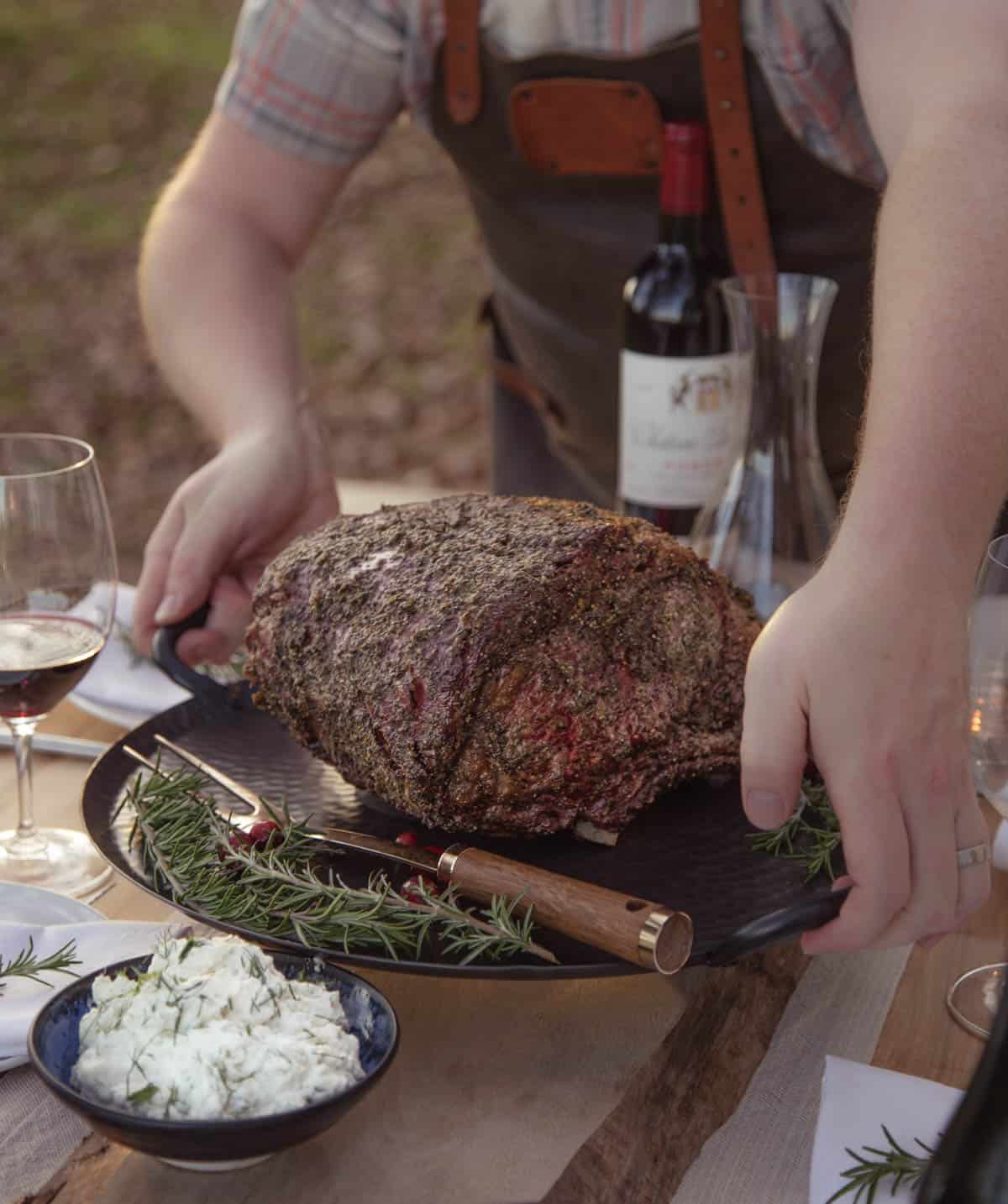
Tried this recipe? Give us a star rating and we would love to see! Mention @vindulge or use the hashtag #vindulge on all the social media handles. And consider subscribing to our newsletter where we drop all our favorite ideas and inspirations every week.
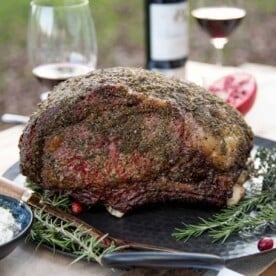
Smoked Prime Rib Recipe
Ingredients
For the Prime Rib:
- 5 pound Prime Rib Roast (or rib roast)
- ¼ cup extra virgin olive oil
- 2 tablespoons coarse ground black pepper
- 2 tablespoons kosher salt
For the Herb Paste:
- 3 cloves of garlic
- 1 tablespoon fresh rosemary
- 1 tablespoon fresh thyme
- 1 tablespoon fresh sage
- ¼ cup extra virgin olive oil
Instructions
For the Herb Paste:
- Place all herb paste ingredients into a food processor and pulse a few times until combined into a chunky paste. (double recipe if roast is over 5 pounds)
For the Smoked Prime Rib:
- Prep Prime Rib: If the bone has already been removed, remove the string and bone to trim excess fat off of the meat, and pat dry. Using butcher's twine, tie the bones back onto the roast. If the bone has not been removed simply remove it after cooking.
- Season Roast: Apply olive oil, and then kosher salt and black pepper generously to the rib roast. Then apply the paste. Store overnight in the refrigerator to allow the seasoning to incorporate into the meat (if possible).
- Preheat Smoker: To 225 degrees using a fruit wood like apple or cherry (oak also works well).
- Smoke Roast: Place the seasoned rib roast on the smoker, bone side down (this acts as a heat shield). Insert any Bluetooth thermometer at this time to monitor the ongoing temperature of the roast while cooking, like the Thermoworks Smoke Unit.
- Continue cooking the roast for roughly 3 1/2 hours or until the center of the meat reads 125 degrees F using an instant-read thermometer for rare. (At 225 degrees plan 40 minutes of cooking time per pound). Use an instant-read thermometer to probe in multiple areas toward the center of the cut. See notes for the temperature chart.
- Rest: Remove Prime Rib from smoker and let sit, tented in foil, for 30 minutes.
- Slice and serve.
Video
Notes
- Rare: 120-130 degrees F
- Medium Rare: 130-140 degrees F
- Medium: 140-150 degrees F
- Medium Well: 150-160 degrees F
- Well Done: 160 degrees F (and not recommended)
Nutrition
Nutrition information is automatically calculated, so should only be used as an approximation.
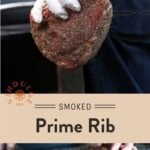
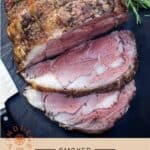
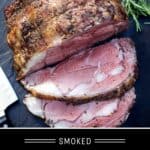
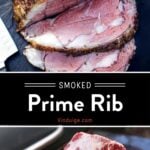
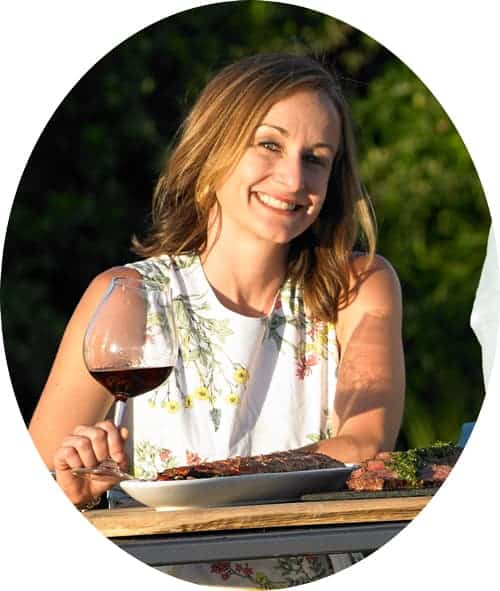
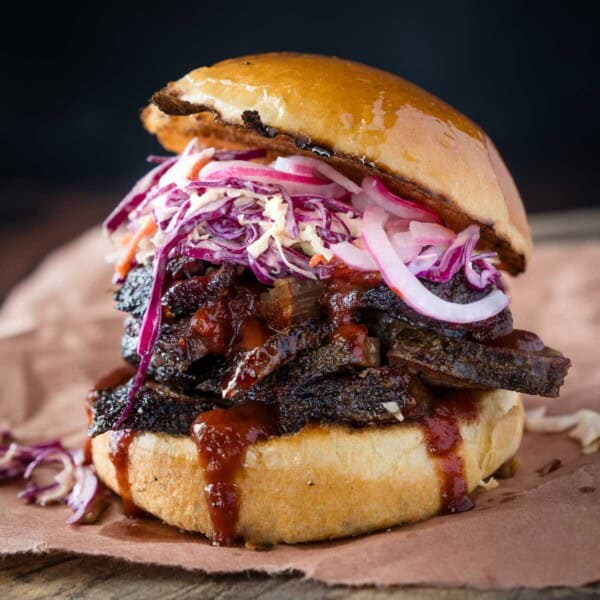
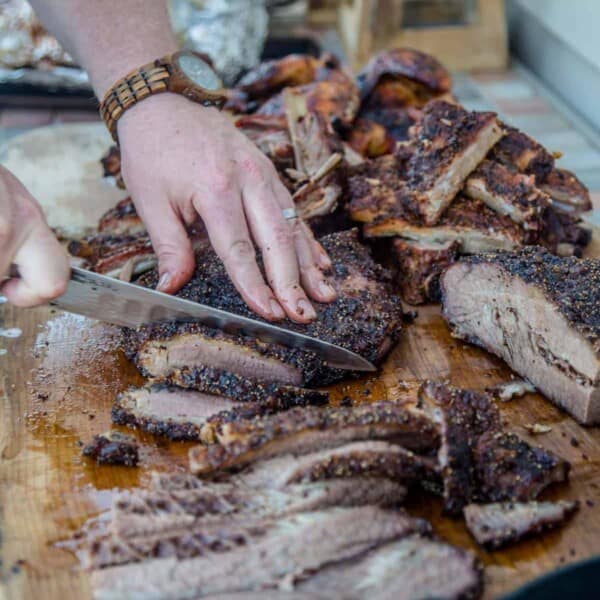
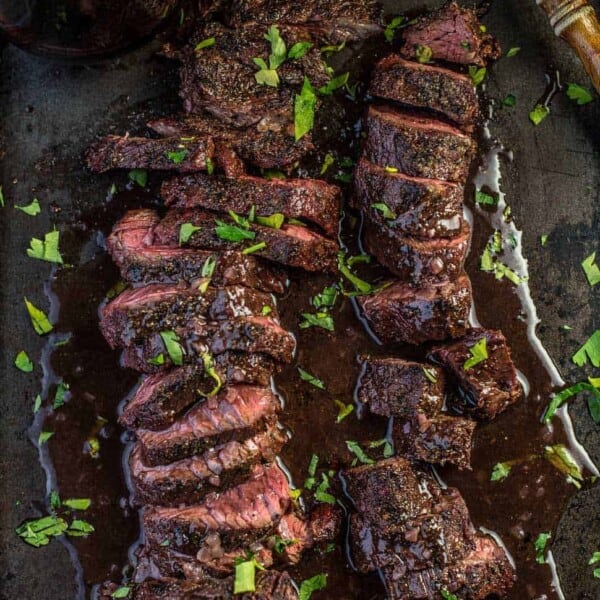
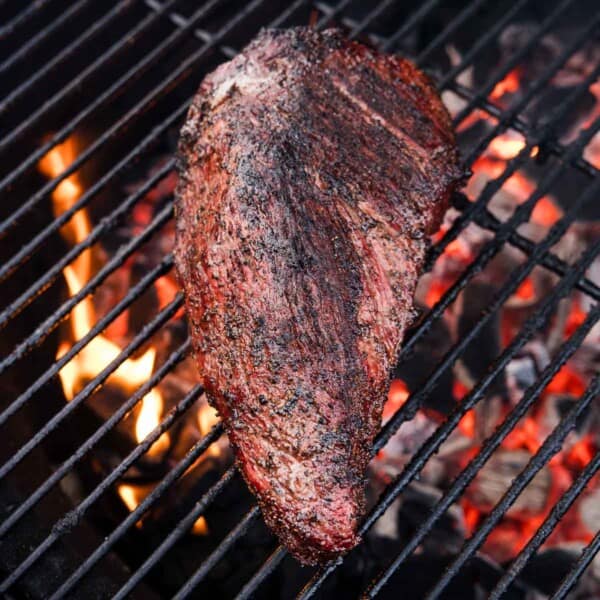





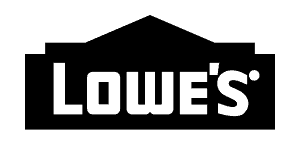









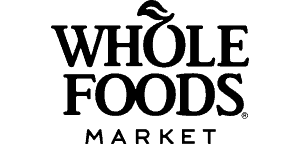
Your finished roast looked sooo good made my mouth water. I am making a 5lb Rib Roast tomorrow in our Traeger using your recipe. Thanks for your great recipes and videos.
Thank you Kathy, we look forward to seeing the finished photos! Remember to cook to your desired finishing internal temperature and let it rest!! 🙂
Oh my word. This was the most amazing prime rib and just melted in your mouth!! Thank you for this recipe! My 4.3 lb prime rib took about 3 hours to hit med rare. How much time would you add for each lb? I plan to do a much larger one for Christmas (this was practice).
We typically gauge roughly 45 mins per extra pound, and shoot for a 130 internal temperature. Hope this helps. Glad you loved the prime rib!!! 🙂
Be a bit more cautious on time for a much bigger roast, an 18 lb prime rib is the same size around as an 8 lber. This means the thickness of the meat that the heat has to penetrate is about the same on both. Start checking your thermometer at 4 to 4.5 hours just to prevent overcooking. Enjoy
Agreed – or consider cutting it in half.
Hi Mary! Big fan here!
I am getting ready to do my first prime rib roast and I want to follow this recipe. I have a massive 16lb prime bone-in rib roast I’ll be making for a party this weekend. I’ll be smoking on a Big Green Egg XL at 225 as you recommend. With this roast being wider but not necessarily thicker than the smaller roast you use, what would you plan on for time? Will it really take 8+ hours to rare/medium-rare plus resting time?
Great question and I really don’t think you will take that much time even with it being so big. Because the heat will cook outside in from both the edges and outside, the cook time should be relatively similar to a smaller cut. You can also up the temperature to 250 if you would like. The nice thing with such a large cut, is you can plan a medium rare edge with rare middle for those who want variety. When can we come over ??? 🙂
Hi Mary,
Found your awesome recipe here on Pinterest. I’ve smoked a few prime ribs on my Treager, but not with such a tasty paste rub. My wife couldn’t say enough about the delicious flavor. It went well with the bottle of 2016 Chronic Cellars La Muneca from Paso Robles. Thanks for posting your recipe. The only thing I regret is that I forgot to take a photo to show off how beautiful it looked.
Thanks again for sharing you recipe
John
I recently purchased a pellet smoker and have had a great time trying out new smoking recipes from your site and fine tuning my already great bbq pork ribs. My family is skeptical on the whole smoking thing and always thinks the food will taste too smokey.
I decided to try your bourbon citris brined turkey for Thanksgiving (actually did 2 small ones) and it came out awesome with everyone liking it. So for Christmas dinner last night I did your prime rib recipe, again with some hesitation from the family. The father in law is a BIG meat lover and I told him I got the 3 bone-in, 8.5lb prime cut from costco, when actually I purchased a choice cut from the local grocery store on sale for 1/2 the price. I prepped the meat the day before per your recipe, cooked at 225 for about 4.5hrs, then pulled and wrapped for another hour while we had drinks & appetizers. I really like the idea of cooking the main course in the smoker so the kitchen is not too busy, plus I wrapped the vegitables & mashed potatoes in a foil covered pan and heated them in the smoker for about an hour at the same time, so minimal kitchen cleanup!
At the least, I myself was pleasantly surprised on how this rib roast turned out. Light smoke flavor, very tender & juicy, with the ends having the most amazing flavor. Everyone loved it and my father in-law commented numerous times on how outstanding it was. I thought it was the wine talking (we paired w/ a 2015 Savant from Justin Vinyards in Paso Robles,CA) but he commented again this morning. I even brought some over to my bbq/smoking connoisseur neighbor last night for him to try.
So easy & good, I will be saving this recipe for future cooks 🙂
Thanks,
Russell
Russell, thank you so much for taking the time to share your experience, and thanks for following along with us. We LOVE the feedback and appreciate it!!!! Perhaps today it is on the menu for leftover Prime Rib Steak sandwiches 🙂 !!!
First time smoking a prime rib, I started out by a slow smoke at low settings for almost three hours. Followed it by turning up the heat because dinner was getting delayed. Two hours later the alarm on the meat thermometer was telling me optimal temp was reached.
My whole family loved the smokiness and the rub.
We used hickory pellets
Jack that is great, and thanks for sharing!! Happy holidays.
I always wanted to smoke a prime rib, so this was the year, and this was the recipe. Absolutely the best prime rib I’ve ever had. The only problem I had was the cooking time…I had the correct temp on the pellet grill @ 225-230, but for a 6.5 lb roast, it went faster than I expected. I pulled the meat off at 140, double wrapped it in foil and placed it in a small insulated cooler for 1 hour. Incredibly moist, and for us, cooked to perfection. I wouldn’t change a thing in the recipe, and I look forward to having this meal again. Thank you very much for sharing such a delicious recipe.
Steve that is fantastic and thanks for sharing. You bring up a great point on cooking time, because the marbling of the meat can change that. Happy holidays!
Oh my goodness! This sounds delicious! We’re hosting a New Year’s Eve dinner and are serving prime rib. I have always cooked the roast in the oven with great success. But we recently got a Big Green Egg and I’d LOVE to use it to cook the prime rib this year! But my question is this: is this a direct or indirect cook?
Thank you so much!
Shay
Shay great question. We also have a BGE and will cook this with the indirect method. So add that EggVerter to the grill and smoke it low and slow!!!
Hi there!
I am making the big Christmas dinner for my family this year! My dad likes to say “Your 21 kid, if you can drink big you can now cook the big family dinner”, he tries to be a funny guy!
I would like to smoke the prime rib, but I am working with an older traeger pellet smoker that only has three settings. Smoke, medium, and high. Of course to make matters worse the temp gauge is shot. What setting would you suggest I cook the roast at and for how long?
Thanks so much!
-Isabele
Isabele have no fear!!! We used to cook on the older Traeger model. Smoke setting is going to run roughly 160 on a normal day. Medium will run 300. And High 375 – 400.
I would plan on using the smoke setting exclusively. It may take a little longer. Do you have access to any kind of thermometer? Digital or otherwise? We use the Thermoworks units, maybe a local store has the Thermapop or Thermapen? (Early Xmas gift ;))
I would say that is key, so you don’t overcook it. Hope that helps!!
This sounds like many gassy farts! hehe
Favorite comment ever. 🙂 Are you sure this isn’t one of our kids lol.